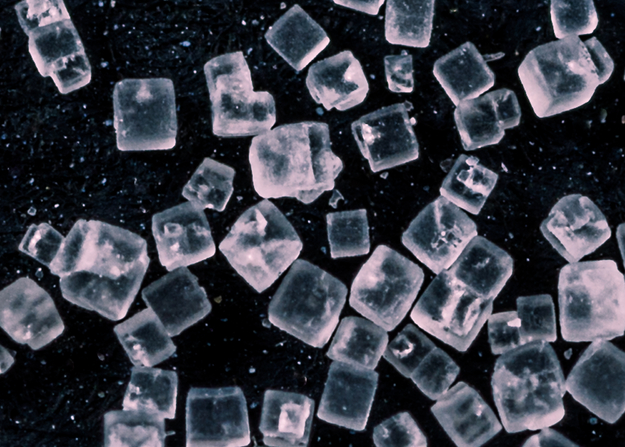Soil amendments to maintain the balance
As we discussed in the previous post, when a lot of salt is present in the soil or the water, ion and osmotic imbalance become a problem. More sodium and chlorine ions in the environment mean the plant can uptake these ions and miss out on other vital nutrients. Or they can lose water and experience drought-like stress.
One easy way to combat this is to simply add more of the other vital nutrients back into the soil.
Adding potassium into the environment (by spraying onto the plants or adding it to the water in various forms) can help the plants to maintain the appropriate levels of potassium. Various studies have shown that this has many benefits, especially increasing the growth of the roots and shoots of plants and increasing rates of photosynthesis (Kumari et al., 2021).
Similarly, applying gypsum to the soil can increase the amount of sulfur and calcium available to plants. Importantly, calcium plays a vital role in the signaling pathways that help plants respond to salt stress. Therefore, more calcium uptake by plants means that they can respond more quickly when their environment gets saltier.
Finally, nothing is more important for soil and plants than a healthy biome. Microorganisms, mycorrhizal fungi, and multitudes of bacteria are vital components of any good soil. Fungi and bacteria are able to form symbiotic relationships with the plants and help them uptake water and transport essential nutrients in stressful conditions. For example, Bello et al. (2021) describes multiple studies that show how bio-organic amendments (such as vermicompost—organic material composted using worms, or cow dung) can actually reduce the salinity of the soil on their own, even when plants are irrigated with brackish or saltwater.
Strategic irrigation
If you have access to fresh water, one potential strategy is to alternate irrigation with fresh and saline water. This strategy can prevent the buildup of salt in the soil by driving it down into the groundwater, while also giving your plants a refreshing drink of sweet water.
In one study, Chandel et al. (2022) alternated between fresh or saltwater irrigation every 30 days for different species of seed spice. In this experiment, many plants watered with alternating saltwater grew just as tall and produced as many seeds as those grown with just freshwater. And, surprisingly, some even grew better.
Another strategic irrigation technique is to use drip irrigation. In drip irrigation an irrigation line is run throughout the planted area and small drip outlets are placed by the plants. These drip outlets provide a slow but continuous supply of water to the plants and keep the root zone hydrated. When this is combined with a layer of organic mulch material on top of the soil it prevents evaporation and stops salts from accumulating in the soil. A study conducted by Wang et al. (2022) showed that when mulched-drip irrigation was applied to salty soil it pushed salts further down into the soil and provided a healthy soil for plants to grow in, even when the water was also brackish.
Conclusion
Soil salinity and saltwater irrigation are not insurmountable challenges for farmers and urban gardeners. If we understand how plants adapt to salty conditions, we can use different management strategies to help them grow, with little or even no negative impacts to the growth of the plants. In a saltier future for the Netherlands and other parts of the world it is important that we work with these new environments instead of against them. By using these techniques, we can not only reduce our use of freshwater but we can also make our cities greener and more healthy for plants, animals, and people.
References
Bello, S. K., Alayafi, A. H., Al-Solaimani, S. G., & Abo-Elyousr, K. A. (2021). Mitigating soil salinity stress with gypsum and bio-organic amendments: A review. Agronomy, 11(9), 1735.
Chandel, S., Datta, A., & Yadav, R. K. (2022). Soil salinity indicators and salinity build-up on saline water irrigation in seed spices. Crop and Pasture Science, 73(6), 663-678.
Kumari, S., Chhillar, H., Chopra, P., Khanna, R. R., & Khan, M. I. R. (2021). Potassium: A track to develop salinity tolerant plants. Plant Physiology and Biochemistry, 167, 1011-1023.
Sang, H., Guo, W., Gao, Y., Jiao, X., & Pan, X. (2020). Effects of alternating fresh and saline water irrigation on soil salinity and chlorophyll fluorescence of summer maize. Water, 12(11), 305
Wang, Z., Li, Z., Zhan, H., & Yang, S. (2022). Effect of long-term saline mulched drip irrigation on soil-groundwater environment in arid Northwest China. Science of the Total Environment, 820, 153222.
